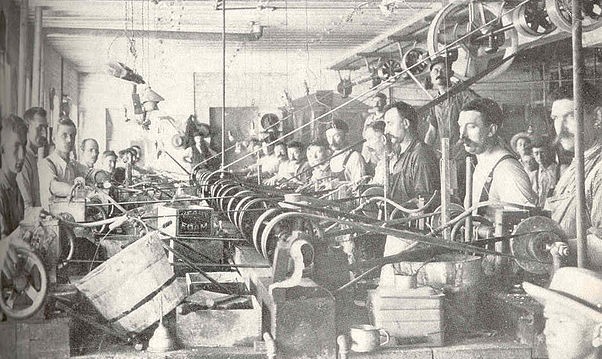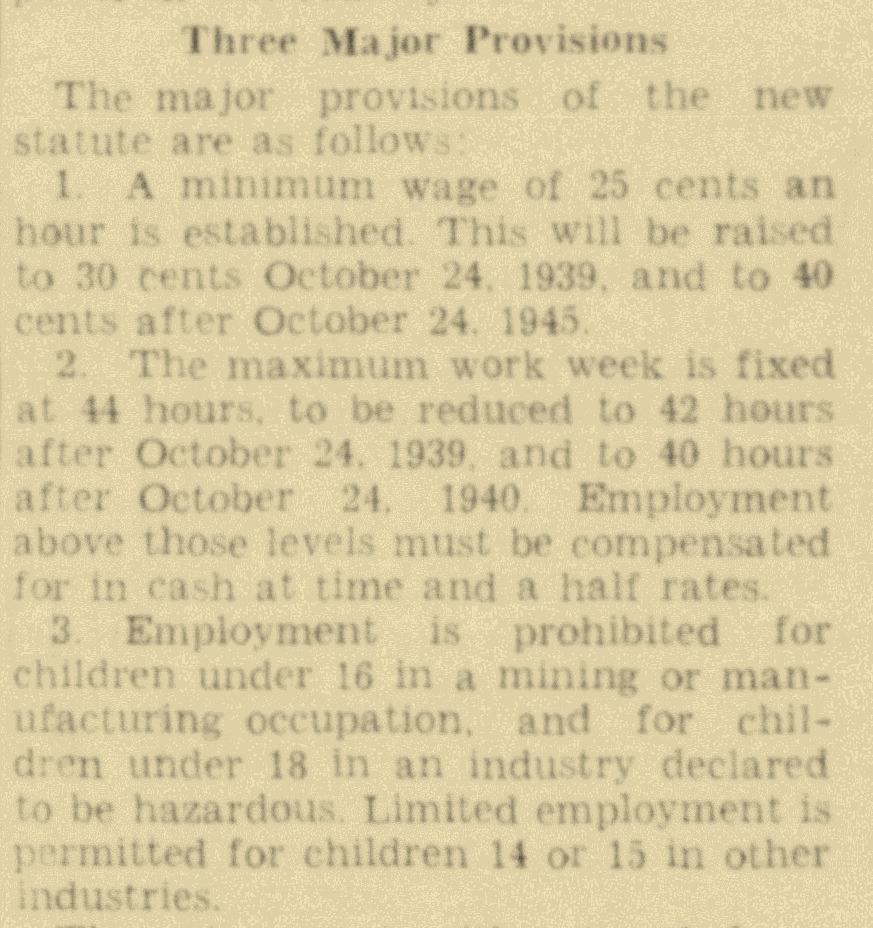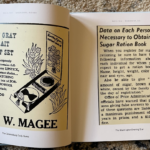The battle over minimum wage has been a regular part of the American economy since the early 1900s. Newspapers were rife with the fight for a minimum wage, a cap on working hours, and a stop to child labor even before it was federally introduced in 1938. Even today, the controversy rages on with more recent newspapers sharing the opinions of America’s working-class on this hot button topic.
1938 – $0.25 per hour
Minimum wage in the form we know it today was introduced with the Federal Labor Standards Act in 1938. The Atchison Daily Globe ran the headline, “Wage Hour Law Now In Effect”, and explained the new law for readers. They even listed out in bullet form the primary attributes noting that the ushering in of the new law was very quiet compared to past pursuits. Harsh penalties for infractions were also included in the new law – up to a $10,000 fine, six months’ imprisonment, or both if violated.
1950 – $0.75 per hour
A new twist to this increase in minimum wage was the addition of overtime. The Brainerd Daily Dispatch published a piece on the law that highlighted major changes and estimated the new wage would cost U.S. employers $300 million more per year.
Journalists were also keen to give their two cents on the issue. Such was the case with an editorial column, “New Minimum Wage,” which cited the difference between minimum wage and the average production worker that made $1.40 per hour.
1961 – $1.15 per hour
A fitting day for a minimum wage increase to take effect was Labor Day in 1961. While Labor Secretary Arthur J. Goldberg felt the country needed to “count its blessings” for the change, he was concerned over the more than 5 million unemployed and the number of industries “operating below full capacity.”
1967 – $1.40 per hour
When the minimum wage increased from $1.25 to $1.40 in 1967, the annual household income was $2,912, which the author deemed “insufficient for bare needs.” Cited as concerns were the increase in the number of economically deprived workers due to the “explosion of technology” and “brand-new skills” that were becoming the norm in the workplace.
1974 – $2.00 per hour
In most cases throughout the history of minimum wage, there were incremental changes over a period of time. This change was no different. In subsequent years, the rate would go from $2.00 to $2.10 and then $2.30 by 1976. Disappointingly for minimum wage workers, the money would most likely not be seen for several weeks due to a delay by the Labor Department to get the official word of the change to employers.
1978 – $2.65 per hour
President Carter signed the legislation in November of 1977, which would “put money into the hands of those that need it to buy the necessities of life.” However, when employees are making more money, it doesn’t come as a surprise that sellers are going to increase prices. The Arkansas City Traveler noted the increased costs set to come locally in things like nursing home care, lodging, movies, and eating out at restaurants.
1990 – $3.80 per hour
And the battle continues…after the increase to $3.80 per hour, full-time minimum wage workers still made $516 a year less than what the government determined was needed to support a family of two at the poverty level.
1996 – $4.75 per hour
President Clinton signed the first stage of a minimum wage bill into effect that would see a 40-cent per hour increase the following year. This increase was “corrected for inflation” with minimum wage at its lowest value in 40 years.” Because of the significant opposition to the wage hike, several items were added, such as non-wage earners contributing to IRAs and an adoption tax credit.
2007 – $5.85 per hour
The Odessa American captured a great editorial piece in their January 13, 2007 edition in their “Weekly Question” section. They asked readers “Do You Support a Hike in Minimum Wage?” and included poll results and comments from the public.
The last adjustment to the minimum wage was on July 24, 2009, when it was set at $7.25. That is more than twenty years without a change and the longest period of time in the nation’s history since the inception of minimum wage without an increase.
To delve deeper into minimum wage and its effect on the economy today and in the past, take a look at a 7-Day Free Trial at NewspaperArchive.com today.
















